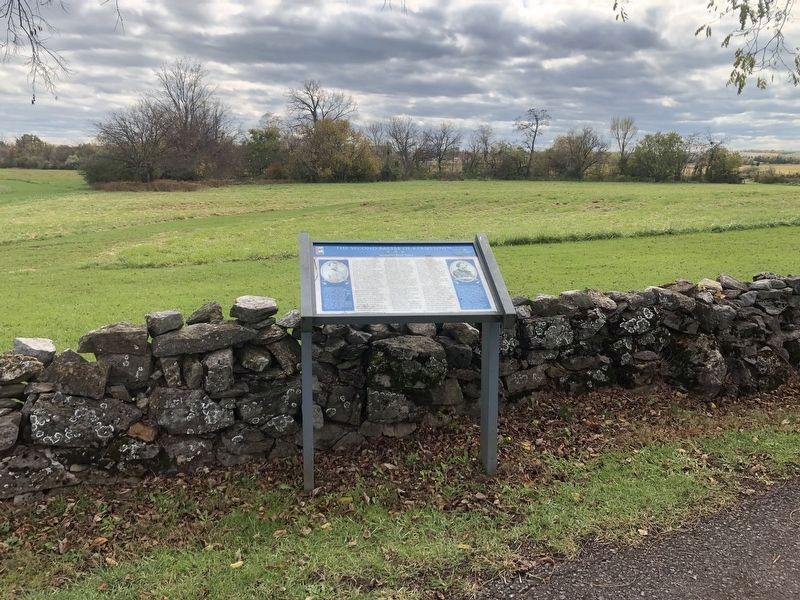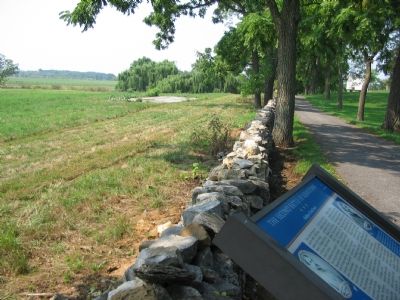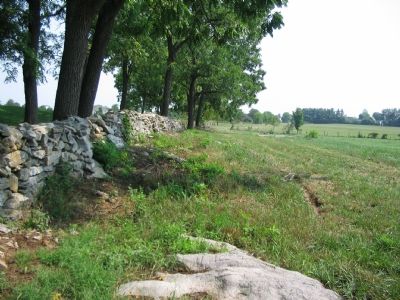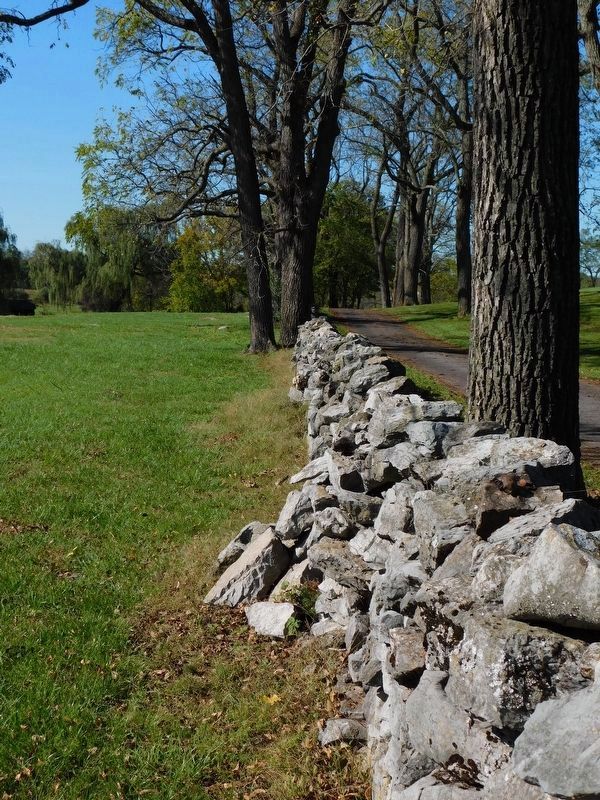Winchester in Frederick County, Virginia — The American South (Mid-Atlantic)
The Second Battle of Kernstown
Mulligan’s Final Stand
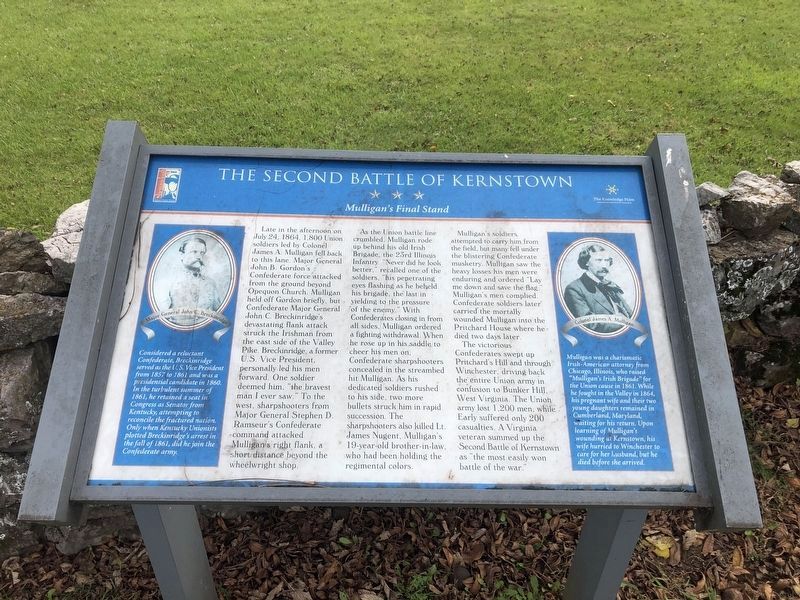
Photographed By Devry Becker Jones (CC0), October 31, 2020
1. The Second Battle of Kernstown Marker
A Virtual Tour of the Kearnstown battles by HMDb markers
Click for more information.
Click for more information.
Late in the afternoon on July 24, 1864, 1,800 Union soldiers led by Colonel James A. Mulligan fell back to this lane. Major General John B. Gordon’s Confederate force attacked from the ground beyond Opequon Church. Mulligan held off Gordon briefly, but Confederate Major General John C. Breckinridge’s devastating flank attack struck the Irishman from the east side of the Valley Pike. Breckinridge, a former U.S. Vice President, personally led his men forward. One soldier deemed him, “the bravest man I ever saw.” To the west, sharpshooters from Major General Stephen D. Ramseur’s Confederate command attacked Mulligan’s right flank, a short distance beyond the wheelwright shop.
As the Union battle line crumbled, Mulligan rode up behind his old Irish Brigade, the 23rd Illinois Infantry, “Never did he look better,” recalled one of the soldiers, “his penetrating eyes flashing as he beheld his brigade, the last in yielding to the pressure of the enemy.” With Confederates closing in from all sides, Mulligan ordered a fighting withdrawal. When he rose up in his saddle to cheer his men on, Confederate sharpshooters concealed in the streambed hit Mulligan. As his dedicated soldiers rushed to his side, two more bullets struck him in rapid succession. The sharpshooters also killed Lt. James Nugent, Mulligan’s 19-year-old brother-in-law, who had been holding the regimental colors.
Mulligan’s soldiers attempted to carry him from the field, but many fell under the blistering Confederate musketry. Mulligan saw the heavy losses his men were enduring and ordered “Lay me down and save the flag.” Mulligan’s men complied. Confederate soldiers later carried the mortally wounded Mulligan into the Pritchard House where he died two days later.
The victorious Confederates swept up Pritchard’s Hill and through Winchester, driving back the entire Union army in confusion to Bunker Hill, West Virginia. The Union army lost 1,200 men, while Early suffered only 200 casualties. A Virginia veteran summed up the Second Battle of Kernstown as “the most easily won battle of the war.”
(Left Sidebar, with portrait of Major General John C. Breckinridge):
Considered a reluctant Confederate, Breckinridge served as the U.S. Vice President from 1857 to 1861 and was a presidential candidate in 1860. In the turbulent summer of 1861, he retained a seat in Congress as Senator from Kentucky, attempting to reconcile the fractured nation. Only when Kentucky Unionists plotted Breckinridge’s arrest in the fall of 1861, did he join the Confederate army.
(Right Sidebar, with portrait of Colonel James A. Mulligan):
Mulligan was a charismatic Irish-American attorney from
Erected by Shenandoah At War; The Knowledge Point, Shenandoah University Historical and Tourism Center.
Topics. This historical marker is listed in this topic list: War, US Civil. A significant historical month for this entry is July 1976.
Location. 39° 8.586′ N, 78° 11.803′ W. Marker is in Winchester, Virginia, in Frederick County. Marker can be reached from Battle Park Drive, on the right when traveling west. Located along the stone wall mentioned on the marker. Touch for map. Marker is at or near this postal address: 610 Battle Park Drive, Winchester VA 22601, United States of America. Touch for directions.
Other nearby markers. At least 8 other markers are within walking distance of this marker. The Pritchard House (within shouting distance of this marker); The First Battle of Kernstown (within shouting distance of this marker); a different marker also named Second Battle of Kernstown (within shouting distance of this marker); Pettus Cousins in the Battle of First Kernstown (approx. 0.2 miles away); a different
marker also named The First Battle of Kernstown (approx. 0.2 miles away); Second Battle of Winchester (approx. 0.2 miles away); a different marker also named The First Battle of Kernstown (approx. 0.2 miles away); a different marker also named The Second Battle of Kernstown (approx. 0.2 miles away). Touch for a list and map of all markers in Winchester.
Regarding The Second Battle of Kernstown. This is one of six battlefield interpretive markers in the park. See the related markers link below for a listing of the walking tour, or the Kernstown Battles Virtual Tour by Markers in the links section for a driving tour.
Related markers. Click here for a list of markers that are related to this marker. To better understand the relationship, study each marker in the order shown.
Also see . . .
1. Kernstown Battlefield Association. Website homepage (Submitted on August 28, 2007, by Craig Swain of Leesburg, Virginia.)
2. Second Kernstown. From the National Parks Service survey of Shenandoah Battlefields. (Submitted on August 28, 2007, by Craig Swain of Leesburg, Virginia.)
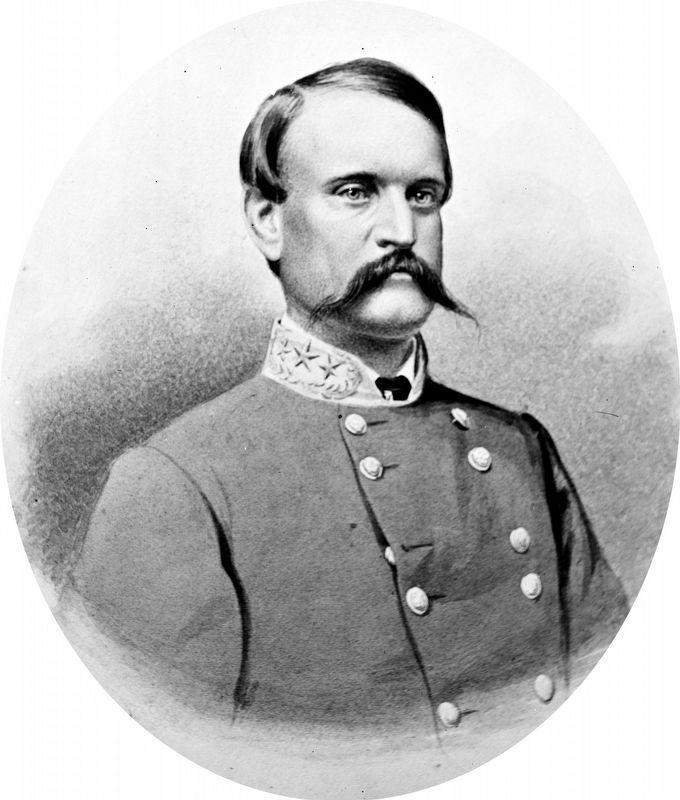
Library of Congress
5. John C. Breckinridge, C.S.A.
Considered a reluctant Confederate, Breckinridge served as the U.S. Vice President from 1857 to 1861 and was a presidential candidate in 1860. In the turbulent summer of 1861, he retained a seat in Congress as Senator from Kentucky, attempting to reconcile the fractured nation. Only when Kentucky Unionists plotted Breckinridge’s arrest in the fall of 1861, did he join the Confederate army.
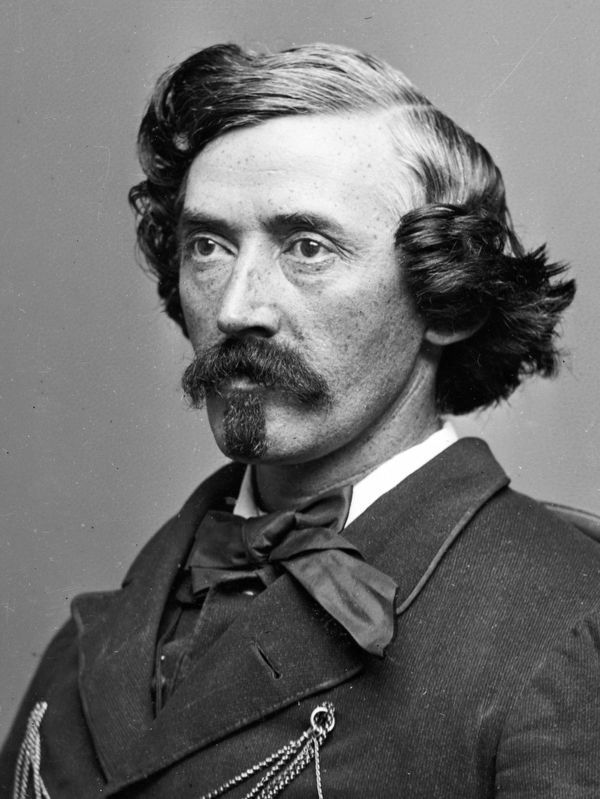
Library of Congress
6. Col. James A. Mulligan, 23rd Ill. Inf. K.I.A.
Mulligan was a charismatic Irish-American attorney from Chicago, Illinois, who raised “Mulligan’s Irish Brigade” for the Union cause in 1861. While he fought in the Valley in 1864, his pregnant wife and their two young daughters remained in Cumberland, Maryland, waiting for his return. Upon learning of Mulligan’s wounding at Kernstown, his wife hurried to Winchester to care for her husband, but he died before she arrived.
Credits. This page was last revised on November 27, 2023. It was originally submitted on August 28, 2007. This page has been viewed 3,631 times since then and 38 times this year. Last updated on August 14, 2020, by Bradley Owen of Morgantown, West Virginia. Photos: 1, 2. submitted on November 2, 2020, by Devry Becker Jones of Washington, District of Columbia. 3, 4. submitted on August 28, 2007, by Craig Swain of Leesburg, Virginia. 5, 6. submitted on October 1, 2020, by Allen C. Browne of Silver Spring, Maryland. 7. submitted on April 4, 2021, by Bradley Owen of Morgantown, West Virginia. • J. Makali Bruton was the editor who published this page.
